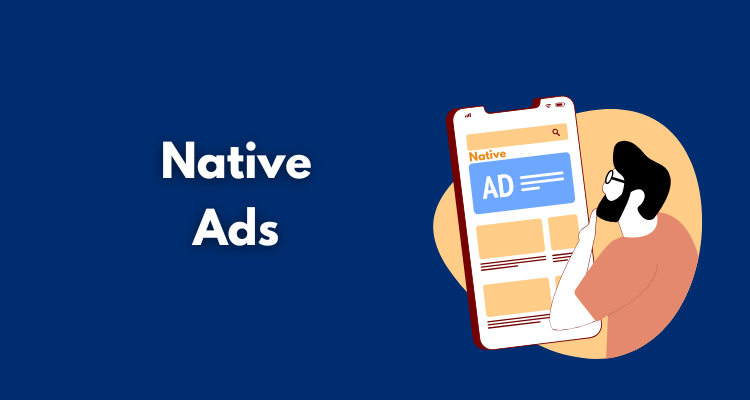Scrolling through your favorite website or social feed, you might think you’re simply catching up on the news or scanning tips for a better morning routine.
But somewhere between that article on productivity hacks and the recipe for gluten-free banana bread is likely something more strategic — what is native advertising in action?
Unlike traditional ads that demand attention with pop-ups or banners, native ads subtly blend into your content stream.
They don’t interrupt but gradually work their way into the user’s consciousness. These are the marketing equivalent of a whisper in a crowded room — subtle, persuasive, and often more effective than the loudest shout.
Table of Contents
ToggleNative Advertising: A Trojan Horse for Influence

Native advertising is deliberately created to blend in with the surrounding content — editorially, visually, and tonally.
It matches the platform style so well that it becomes real content unless labeled (and sometimes even then). This plan utilizes what thinkers refer to as ‘perceptual fluency’ — the mind’s tendency to favor what seems familiar and straightforward to understand.
We don’t doubt if a message feels like a usual piece of the user’s time. We take it in. This type of quiet push allows native messages to slip past the mind’s careful checks, such as the inner voice that says, ‘Hold on, this is wanting to sell me something.’
Mind Games in Marketing

It’s not about being lost in the content but instead bending the perception toward it. Flashy calls to action or disruptive banners are not necessary for a campaign to capture attention, plant-specific ideas in consumers’ minds, or even build brand affinity.
The magic is in the kind of trust it manages to mimic. Properly positioned content that feels familiar, relevant, and emotionally aligned with our expectations lets our brain file it under “safe.” We, therefore, process it more quickly and with less skepticism. It’s there in our scrolling flow as another ‘helpful tip’ or useful article.
Yet that cognitive trick masks careful strategies; native advertising systems based on behavioral data, format mimicry, and emotional resonance have developed a propensity to dodge our mental ad-blockers.
The effect is staggering: not only are users much more likely to see native content but also more likely to recall it, believe it in, and act on it. The real genius? Most never even realized that they were being sold in the first place.
Banner Blindness vs. Native Awareness
For years, we have had users develop what we refer to as banner blindness — they skip, scroll, or mentally block anything that resembles an ad. Flashing images, pop-ups, and sidebars barely register anymore. Native advertising goes the other way around.
Copying ‘and editing content does not set off resistance. Rather, it follows the reader, gently facilitating them with well-placed clues and pertinent value. Think: “You might also like…” or “Recommended by our editors.”
As explained in Smarty Ads’ breakdown of native formats, this can include:
- In-feed ads on news or social platforms
- Content recommendation widgets
- Branded articles or videos integrated into publisher sites
The Psychology: Why We Don’t Notice — And Why It Works
Native ads don’t just hide in plain sight. They co-opt attention through a series of subtle psychological levers:
- System 1 thinking: Our brain processes most content automatically (System 1), reserving deep scrutiny (System 2) for content that stands out as unfamiliar. Native ads exploit this by not standing out.
- Priming: When we see a native ad within trusted editorial content, we’re more likely to trust it, too — thanks to the environmental association.
- Cognitive ease: Content that’s easy to process feels “truer.” If a native ad reads smoothly and fits the platform, our brain doesn’t fight it — it accepts it.
Targeting the Subconscious with Contextual Relevance
Another mind trick native ads use is contextual harmony. A reader searching for the “best hiking trails in Europe” might stumble on an article titled “Top Trails to Try This Summer,” which — though sponsored by a travel brand — feels perfectly relevant. This isn’t just a coincidence.
Programmatic ad platforms like Smarty Ads use real-time bidding (RTB), audience segmentation, and contextual signals to place native content where it will resonate most.
This type of targeting increases engagement and reduces cognitive dissonance — the point at which a person becomes aware of being marketed to and resists.
Emotional Resonance without the Hard Sell
Native advertising also leverages emotional storytelling. It speaks in the language of the reader — not of the brand.
For example, a sponsored article titled “How I Paid Off $50,000 in Debt While Traveling the World” may be sponsored by a fintech brand — but it feels like a story, not a commercial.
This emotional immersion helps brands gain trust and relevance. It allows them to align with the reader’s goals and values without being aggressive or disruptive.
The Ethics: Where Influence Meets Manipulation
There’s a fine line between smart integration and deceptive design. Native advertising walks that line.
According to FTC guidelines, native content must be clearly labeled as advertising. However, despite disclaimers like “Sponsored” or “Promoted,” research shows many users fail to distinguish native ads from editorial pieces.
SmartyAds emphasizes transparency in its native ad placements by working closely with publishers to ensure that labeling is present, ethical, and visible. This isn’t just compliance — it’s a way to protect long-term trust in the brand and the platform.
Cross-Platform Behavior: From TikTok to The New York Times
Native advertising morphs to fit the design language of each platform. On Instagram or TikTok, it may appear to be influencer storytelling. It could appear as an editorial-style piece on Forbes or The Guardian.
This adaptive behavior is part of the mind game of native advertising: It doesn’t just look natural; it feels native to each environment.
AdTech firms, for example, Smarty Ads, construct multi-format delivery engines that enable brands to place native ads seamlessly across various devices and screen sizes — ranging from mobile apps to connected TVs.
Conclusion: The Mind Game That Works — If Played Right
Native advertising is more of a mindset than a format. It HACKS perception, gets past skepticism, and draws users into Branded Narratives without breaking the flow. It can be the most effective and least intrusive digital advertising if done ethically, well-targeted, and user-first.
\This is what platforms like Smarty Ads do — they help standardize the process. They give Brands the tools to master native advertising without manipulating the audience & in doing so, turn Mind games into Meaningful connections.
So next time you read something that feels just right — pause. It might be a native ad. But does it matter if it helped, informed, or moved you?









